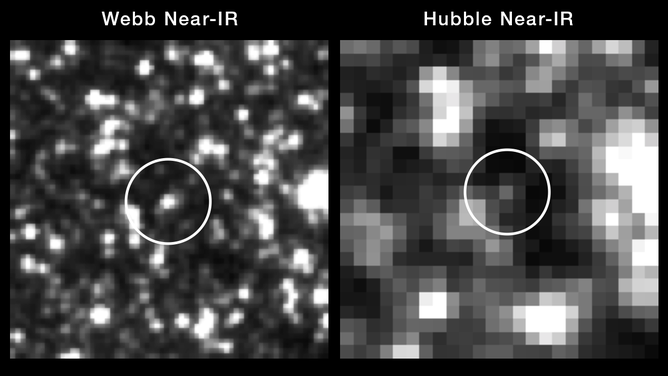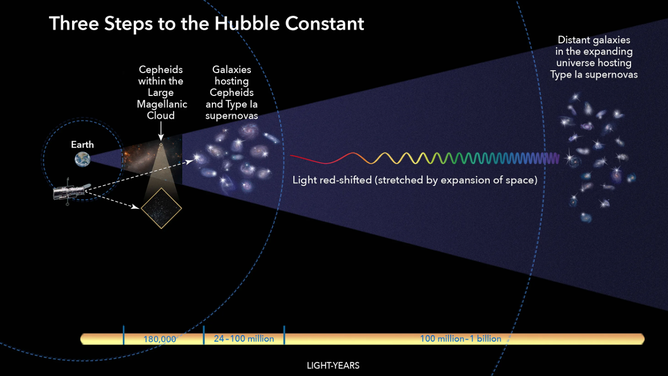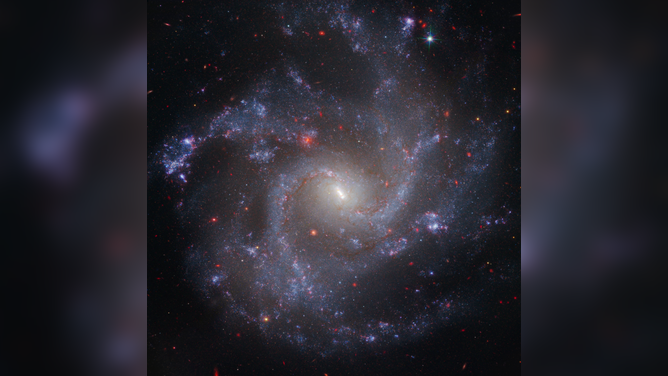NASA’s Webb telescope confirms Hubble’s baffling observations about Universe’s expansion rate
Physicists used NASA’s James Webb Space Telescope to confirm Hubble’s measurements that find the current rate of expansion of the universe is faster than expected. However, scientists are still trying to connect the dots between the beginning of the universe to present day to understand what is causing the universe expansion to accelerate.
What is the James Webb Space Telescope?
According to NASA, the JWST sees the universe using infrared radiation, a form of light that we feel as heat and is invisible to human eyes.
NASA’s James Webb Space Telescope has confirmed Hubble Space Telescope’s measurements that find the current rate of expansion of the universe is faster than expected. Still, scientists don't understand what is causing the universe's expansion to accelerate.
Physicists have been trying to understand the "Hubble tension," which refers to the questions surrounding Hubble's observations over 30 years that indicate the universe is expanding faster than expected based on our understanding of the universe.
Many questions remain about why the universe is expanding. The mystery phenomenon is known to cosmologists as "dark energy."
How to measure the universe
According to NASA, astronomers use objects known as Cepheid variable stars to measure relative cosmic distances. These pulsating stars are used as universal markers because they go through cycles of dips and peaks in brightness, which help astronomers determine the distance to the star. They can also determine distances from our galaxy to other galaxies.
HOW THE TELESCOPE BECAME OUR WINDOW INTO THE UNIVERSE

At the center of these side-by-side images is a special class of star used as a milepost marker for measuring the universe’s rate of expansion – a Cepheid variable star. The two images are very pixelated because they are a very zoomed-in view of a distant galaxy. Each of the pixels represents one or more stars. The image from the James Webb Space Telescope (left) is significantly sharper at near-infrared wavelengths than Hubble (which is primarily a visible-ultraviolet light telescope). (Credits: NASA, ESA, CSA, STScI, Adam G. Riess (JHU, STScI))
(NASA)
The SH0ES (Supernova H0 for the Equation of State of Dark Energy) team, led by Nobel Prize physicist Adam Reiss, used Webb telescope observations of Cepheids also observed by Hubble to "check its homework," the space agency said.
The image above shows side-by-side photos of a Cepheid variable star taken by both telescopes, used to measure the universe's expansion rate.
The initial Webb observations, fact-checking Hubble data, confirmed the first rungs of the "cosmic distance ladder" – the process of measuring nearby galaxies and then moving farther and farther away, also known as the "Hubble Constant."

This illustration shows the three basic steps astronomers use to calculate how fast the universe expands over time, a value called the Hubble constant. All the steps involve building a strong "cosmic distance ladder," by starting with measuring accurate distances to nearby galaxies and then moving to galaxies farther and farther away. This "ladder" is a series of measurements of different kinds of astronomical objects with an intrinsic brightness that researchers can use to calculate distances. Among the most reliable for shorter distances are Cepheid variables, stars that pulsate at predictable rates that indicate their intrinsic brightness. (Credits: NASA, ESA, and A. Feild (STScI))
(NASA)
"We’ve now spanned the whole range of what Hubble observed, and we can rule out a measurement error as the cause of the Hubble Tension with very high confidence," Riess said.
New Webb observations included five host galaxies with 1,000 Cepheids, including the farthest galaxy where Cepheids have been measured. Galaxy NGC 5468, pictured below, is 130 million light-years away.

This image of NGC 5468, a galaxy located about 130 million light-years from Earth, combines data from the Hubble and James Webb space telescopes. This is the farthest galaxy in which Hubble has identified Cepheid variable stars. (Image credits: NASA, ESA, CSA, STScI, Adam G. Riess (JHU, STScI))
(NASA)
"This spans the full range where we made measurements with Hubble. So, we've gone to the end of the second rung of the cosmic distance ladder," said Gagandeep Anand of the Space Telescope Science Institute.
STUNNING IMAGES, DISCOVERIES FROM JAMES WEBB SPACE TELESCOPE IN 2023
NASA said scientists are seeking the missing pieces to link the beginning of the universe to the present day, which has yet to be observed.
In the coming years, two dark matter detectives could help reveal the cause of the universe's expansion.
European Space Agency's spacecraft Euclid, launched last year, will create a 3D map of the sky, viewing its evolution over 10 billion years. NASA is also launching the Nancy Grace Roman Space Telescope in 2027 to study the influence of dark energy and other mysteries of the universe.
